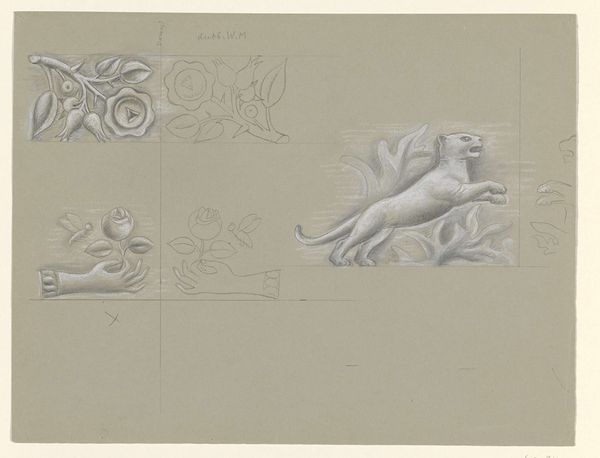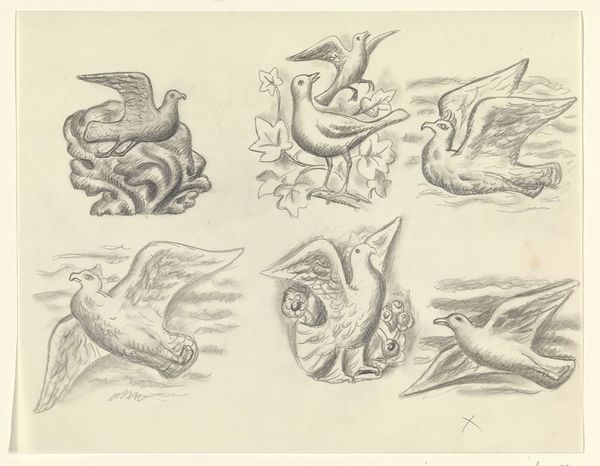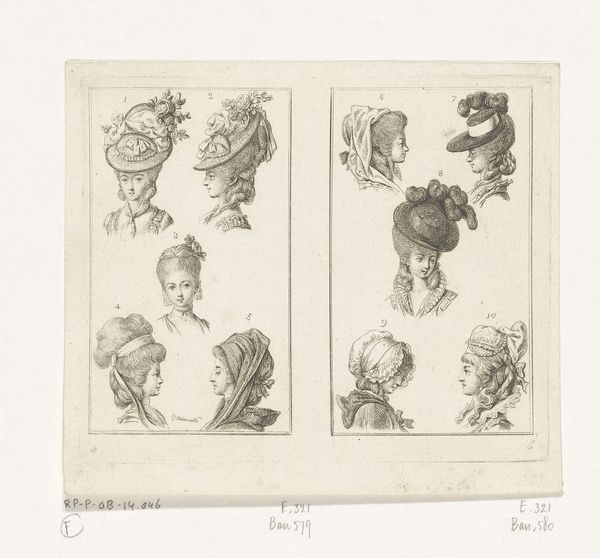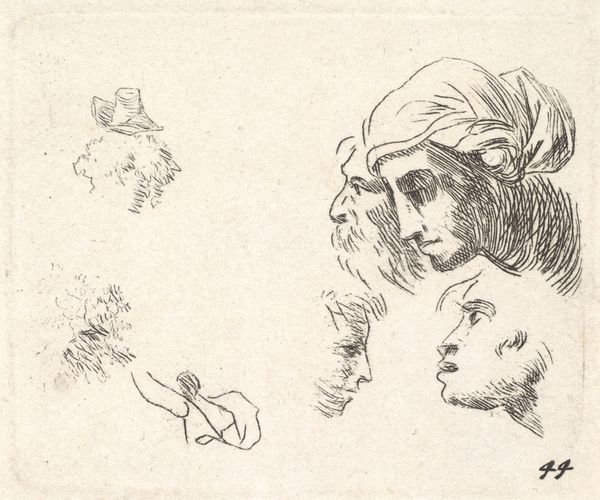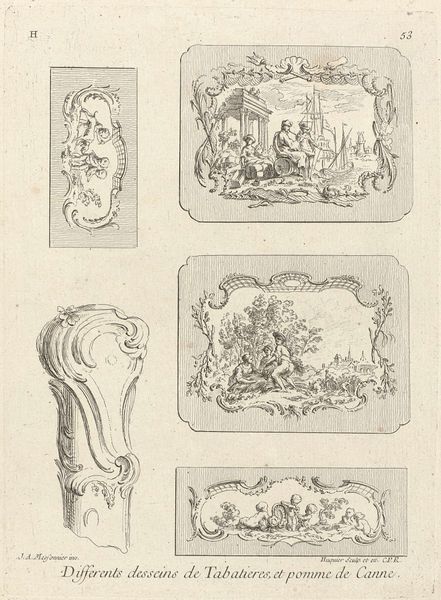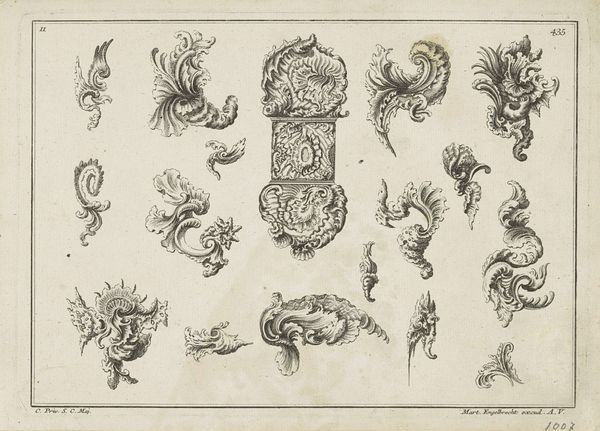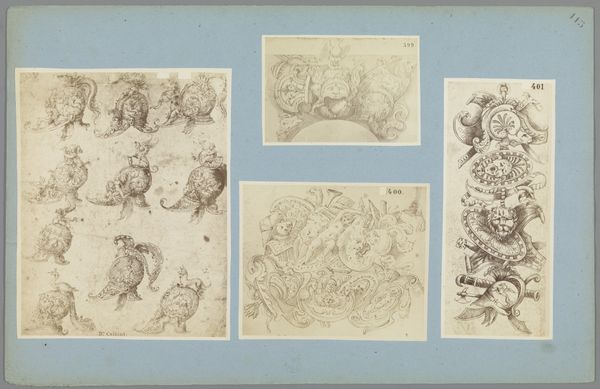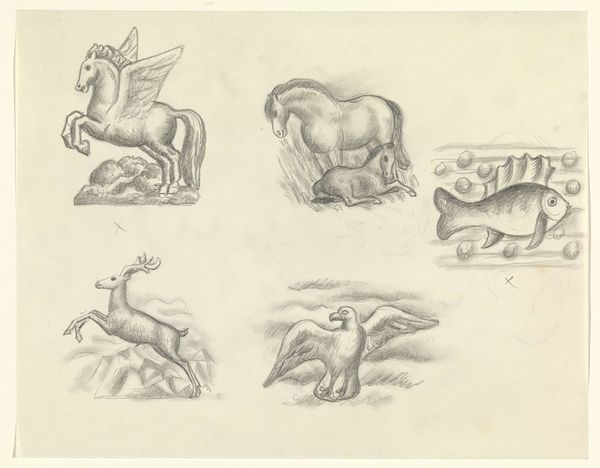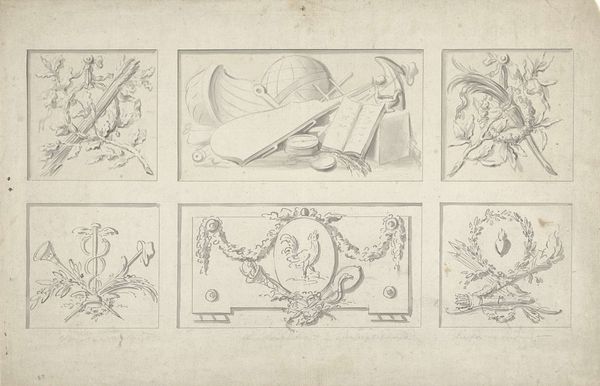
drawing, pencil
#
portrait
#
drawing
#
pencil sketch
#
landscape
#
figuration
#
geometric
#
pencil
#
sketchbook drawing
Dimensions: height 250 mm, width 326 mm
Copyright: Rijks Museum: Open Domain
Curator: Welcome! We're looking at Leo Gestel's "Pegasus, duif, vrouwenhoofd, wapen en hand met roos," a pencil drawing made between 1939 and 1941, now held in the Rijksmuseum. Editor: It's an intriguing composition. There's a dreamy, almost melancholic quality to these seemingly unrelated images floating on the page. The monochromatic palette reinforces that mood. Curator: Gestel created this during a turbulent time in Europe. The symbolic weight of these images – the mythical Pegasus, the dove representing peace, the woman, a weapon, and a hand holding a rose – speak to larger societal concerns about conflict and hope. His social commentary is quite subtle here, don't you think? Editor: Absolutely. Thinking about it from a production standpoint, the choice of pencil as the medium is significant. It makes the work feel immediate, accessible. A directness to his feelings rendered plain. These elements usually rendered in plaster, stone or another weighty material are reduced to mere outline here. And I am left wondering if these drawings could be patterns for another medium or sketches of previous creations. Curator: The rise of fascism and the impending war were undoubtedly influencing artistic expression at the time. Gestel, like many artists, probably felt the urgency to address these anxieties through their art. The museum acquires artwork which reflects their immediate fears but sometimes misses the slow churning anxieties experienced in everyday life and their effects upon process. Editor: Right. Also, pencil allowed for revisions, alterations, a constant reworking of ideas. There's a rawness that resonates with the instability of the period and a quiet resistance to imposed limitations via rationing. He may well have had no access to those high-art mediums at the time, only pencils he could find. It speaks to a practicality and resourcefulness during wartime that goes unnoticed. Curator: Yes, it makes you think about art's function during those years. This drawing feels deeply personal, a reflection of inner turmoil amidst external chaos. The dove alongside the weapon makes you consider his hope for freedom at a time of great suppression. Editor: Precisely. And by using such common, almost pedestrian materials, Gestel democratized the artistic process. Anyone with a pencil and paper could express themselves, blurring the lines between artist and citizen, making the role accessible and important. It is a reminder to not restrict the making to those of high station or wealth, but those of the hand and ingenuity. Curator: A powerful point to consider as we reflect on Gestel's drawing. It's more than just a collection of images; it’s a testament to art's enduring ability to convey complex emotions during times of crisis. Editor: Indeed. And the everyday labor which is rendered into making as much more powerful symbol.
Comments
No comments
Be the first to comment and join the conversation on the ultimate creative platform.

